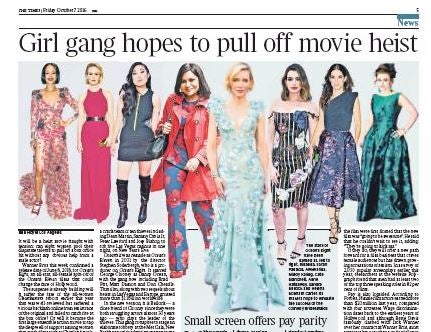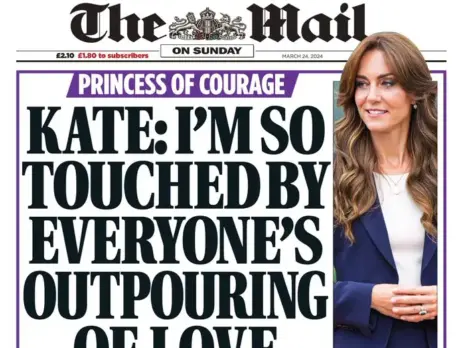
The other day I was interrupted in what I was doing by a beautiful woman.
I took her home, and, as I write these words three weeks later, she stares back at me still, her perfect mouth forming a smile, and her dark eyes gazing deeply into mine.
She is, I have to tell you, just a photograph. A happy picture of a brunette in a red, off-the-shoulder dress, who has a nose and pert little chin so cute that their outlines could be that of a Walt Disney cartoon heroine.
I found her, with long brown hair curling artfully away to show earrings shaped like silver snowflakes, in my favourite newspaper.
I had begun at page one, and read on through the paper about Darfur, a Van Gogh discovery, Mexican floods, and the passing trivia of British domestic politics, until I came to page 29. And there she was: beautiful almost beyond belief, and – for this was the nominal reason she was pictured in the paper – quite dead.
What intrigued me was not just her beauty, but the use to which it was being put.
She was an Australian newsreader who suffered so badly from depression that one day she took herself to some ocean cliffs, sent a text message to the boyfriend she’d known for eight years, and hurled herself off.
For her family and friends, it was a tragedy; and for Australian newspapers, undoubtedly a sizeable story.
But what was it doing filling all the editorial space of a page in a quality newspaper the other side of the world?
Since when had people been interested in the lives of those who read the news on television screens 11,000 miles away?
The answer lies in that photograph, which filled almost as much space as the words that accompanied it. Had she been plain-looking, there is not the slightest chance she would have featured in a newspaper 11 time zones away.
It is, I think, an example of how physical attractiveness and gender have become factors in news values.
I know several papers in London where human interest stories – unless they are utterly extraordinary – will not be published unless they involve people who are attractive or female, or both.
Here, and on many other papers, the people whose experiences are used to illustrate a news story or feature must conform to certain social, age, gender, and attractiveness standards.
If the story is at all sympathetic, the subject must not be ugly, untidy, low class, or even just unyouthful and male.
One paper whose news editor I know published a very moving account from a man in his 50s to illustrate a story. After the first edition appeared, the editor rang the newsdesk to angrily demand that an account from a “smart” woman in her twenties or thirties was found to replace “this old bloke”.
This preoccupation with appearance infects the news values even of stories where beauty and celebrity are irrelevant.
Would the murder of Meredith Kercher in Perugia be given such prominence if she was overweight and Amanda Knox had a skin problem?
Would the coverage of Madeleine McCann’s disappearance be half so big if she was not so appealing?
Like it or not, attractiveness adds news value.
The story of, for instance, a threat to countryside from development, will always get more space if the campaigner is an attractive thirty-something woman rather than a toothless old farmer.
And such considerations even apply to the land itself, a habitat containing 100 rare species that looks ordinary being far less likely to be reported on than a pretty view that is biologically nondescript.
So is this all evidence of the superficiality of journalists? Possibly, for newspaper editors are very marketing and image-conscious these days, and patrol the pages of their papers making sure the people written about are the kind they think readers aspire to being (young, successful and attractive).
Newspapers are also much more heavily illustrated now, and it is but a small step to go from putting in occasional pictures of attractive people and things where relevant, to demand that stories are written primarily about them, or references to them routinely inserted, so the use of their pictures can be justified.
Email pged@pressgazette.co.uk to point out mistakes, provide story tips or send in a letter for publication on our "Letters Page" blog







